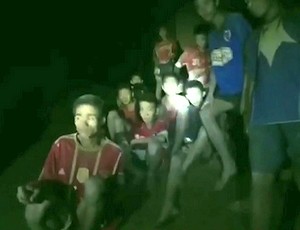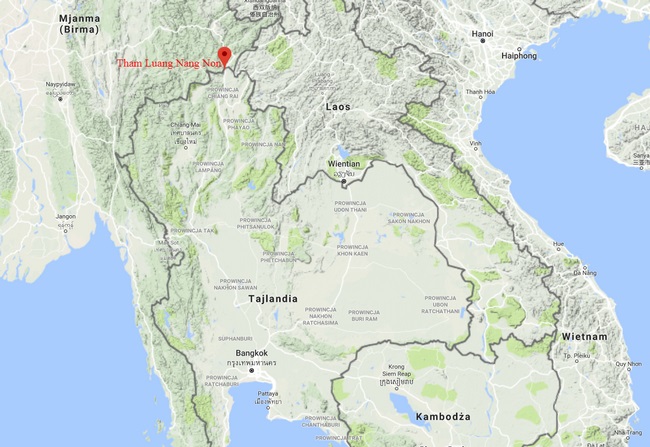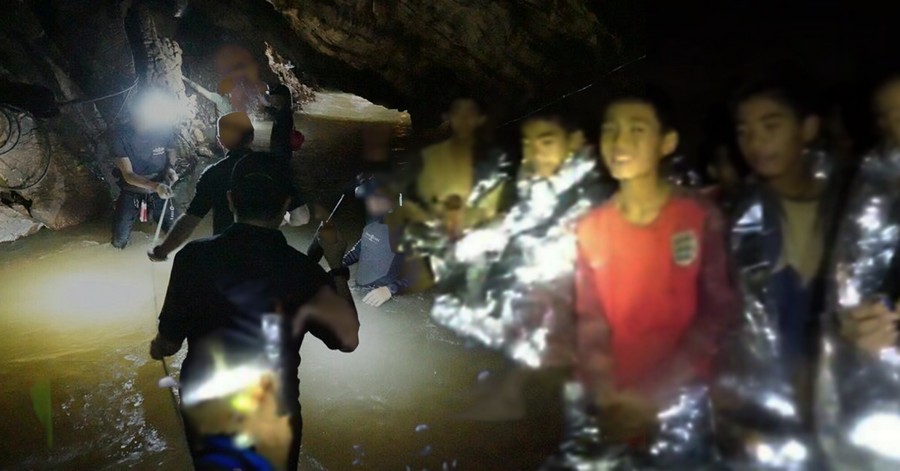
From 23 June to 10 July, a group of twelve boys along with their football coach were trapped underground by rocks and water in the Tham Luang Nang Non cave in Thailand. We asked Paulina Wróbel, a JU psychologist, about how such a traumatic experience may affect a child’s psyche.
The nightmare of the young football players and their coach began at the end of June. Twelve boys, aged 11–16, and their 25-year old coach entered a cave system in the north of Thailand. Due to have rainfall, their only way out became impassable – the whole corridor was flooded.
After nine days, a special forces unit finally reached Tham Luan Nang Non and made contact with the trapped children and their guardian. Fortunately, they were all safe and sound. Resucing them quickly was of the highest priority, but it wouldn’t be easy: their only escape route was a three-kilometre-long corridor, often narrow and mostly fully submerged. It was suggested that the entire operation might take a month. As it turned out, they made it out in a little over two weeks.
The effects of stress
 How does a person behave in such dramatic situations? What’s the psychological state of the children that were trapped in the cave? And did it affect the chances of their survival? Paulina Wróbel from the JU Department of Clinical Psychology, a specialist in the area of trauma and PTSD, provided us with answers to our questions.
How does a person behave in such dramatic situations? What’s the psychological state of the children that were trapped in the cave? And did it affect the chances of their survival? Paulina Wróbel from the JU Department of Clinical Psychology, a specialist in the area of trauma and PTSD, provided us with answers to our questions.
‘Any event related to risk of injury or death, be it for us or our close ones, can be classified as traumatic’, said Paulina Wróbel. ‘And it is exactly the kind of situation that the boys in the cave have found themselves in. Highly stressful stimuli may induce disorders in our organisms. Cortisol and adrenaline excite the sympathetic nervous system, increasing heart rate and blood pressure, making breaths shallow and fast, and pumping blood into muscles in order to improve vascularisation and oxygenation’. In short term, it allows us to cope with a difficult and dangerous situation, but in the long run it may cause harmful changes (e.g. shrinking our hippocampus, which is responsible for emotional memory).
‘In some cases, a very acute reaction to stress may result in some or all of the following symptoms: withdrawal, lowered attentional span, confusion, daze, overexcitement, anger, aggression, and despair. In most cases, there are also strong feelings of fear accompanied by physiological changes caused by the sympathetic nervous system’, she added. ‘Acute reactions are usually a temporary state and disappear along with the perceived threat’.

Why do we need stress?
Stress doesn’t always have to be negative. ‘Stress is a kind of tension that builds inside of us in order to motivate us to act. Because of it, we’re able to recognise and asses various stimuli in our environment, classifying them as challenges or threats. If we have enough resources (i.e. social support, intelligence, skills, wealth, useful information), we’re able to deal with stress. If we lack those things, the organism quickly enters the state of exhaustion’, explained Paulina Wróbel.
Social support is one of the most important resources listed above. It acts as a sort of a buffer that protects us from the negative impact of stress. The fact that we’re surrounded by people that we can talk to and ask their advice is very important when coping with stress. That’s why any support the boys received from both one another and the outside world was so significant. ‘Stress can be both mobilising and demoralising. It all depends on the personalities of the boys, their beliefs, and problem solving skills. Naturally, any kind of assistance, be it emotional, material or informational, was surely very important to them.
We need to remember, however, that even people with easy access to resources can be severely harmed when exposed to prolonged stressful situations. An excellent example of this are soldiers or emergency rescuers, who are often diagnosed with PTSD (post-traumatic stress disorder), even though at first it may seem that they were professionally trained to withstand life-threatening situations.
‘The risk of PTSD is increased when the reaction to an event involved intense fear, terror, helplessness as well as – in the case of children – aberrant behaviours and excitement’, explained Paulina Wróbel. ‘At the same time, it’s necessary to emphasise that not all participants of stressful events suffer from stress-induced disorders. Each individual person has their own mechanisms of combating stress. It’s difficult to predict the future behaviour of these kids. It’s certain, however, that they’ll need care and support, and in some cases maybe also special psychological help’, she concluded.
Pictures: Thai Navy Seals / Facebook
Original text: www.nauka.uj.edu.pl





